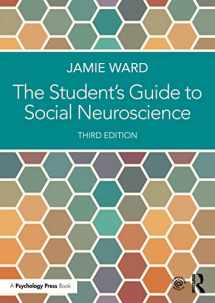
The Student's Guide to Social Neuroscience
Book details
Summary
Description
This engaging and cutting-edge text provides an accessible introduction to the complex methods and concepts of social neuroscience, with examples from contemporary research and a blend of different pedagogical features helping students to engage with the material, including essay questions, summary and key points, further reading suggestions, and links to online resources.
Social neuroscience is a rapidly growing field which explains, using neural mechanisms, our ability to recognize, understand, and interact with others. Concepts such as trust, revenge, empathy, prejudice, and identity are now being explored and unraveled by neuroscientists. The third edition of this ground-breaking text has been thoroughly revised and expanded to reflect the growing volume of evidence and theories in the field. Notable additions include a greater emphasis on genetic influences, hormonal influences, and more detail on methods such as fNIRS, multivariate pattern analysis, and heart-based psychophysiological measures. This edition also provides new material on gender identity and sexuality, constructivist theories of emotion, compassion versus empathy, the dark triad, and altruistic punishment. The book is supported by a fully updated companion website, featuring student resources including lecture recordings, multiple choice questions, and useful web links, as well as PowerPoint slides for lecturers.
Richly illustrated in attractive full-color, with figures, boxes, and ‘real-world’ implications of research, this text is the ideal introduction to the field for both undergraduate and postgraduate students in fields such as psychology and neuroscience.


We would LOVE it if you could help us and other readers by reviewing the book
Book review



